Fundamental Insights
#1 Aptos, Sui, and Linera
The Libra gang gathers lots of attention these days. People know Libra gang because of their high valuations and funding from first-tiered VC. In this section, we will briefly talk about the innovations of Libra gang.
In short, the Libra gang is working on a new language, Move language, high TPS, low latency, and fast finality. This should sound familiar like other Ethereum killers and Solana. Solana is proud of Rust-based smart contracts, high TPS, and low latency.

Users complained about high fees for traditional blockchains. Therefore, new layer1 with high TPS appeared. After high TPS blockchains emerged, users expect a shorter finality time. On these high TPS blockchains, user transactions are not always well packed and face network congestions. Moreover, cross-chain experiences for users are generally bad.
The innovations mainly happen in transactions and move language.
Transactions
Validators validate transactions individually. This brings low latency and high TPS. The transactions lifecycle is the following:
- User sends the transaction
- Validators vote for it based on POS rule
- Sender collects votes and generates certificate
- Sender broadcasts certificate
Senders take part of the work during consensus.
An arbitrary number of atomic actions can be done in one single transaction across multiple on-chain accounts. For example, the user can transfer to different accounts in one transaction.
Parallel account transactions also contribute a lot to TPS. Dependent transactions mean that tx2 relies on the output of tx1. Dependent transactions are executed in order, but independent transactions are executed in casual order.
Move
Move is a Rust-based language. It attracts developers from other Rust-based blockchain ecosystems, like Solana, CosmWASM and Polkadot.
Move focuses on asset movement. Assets can be the input and output of the function. This increases interoperability.
States are stored in users' own storage space. Users need to pay for them and get refunds after destroying them.
Here is a detailed comparison between Libra and other common blockchain.
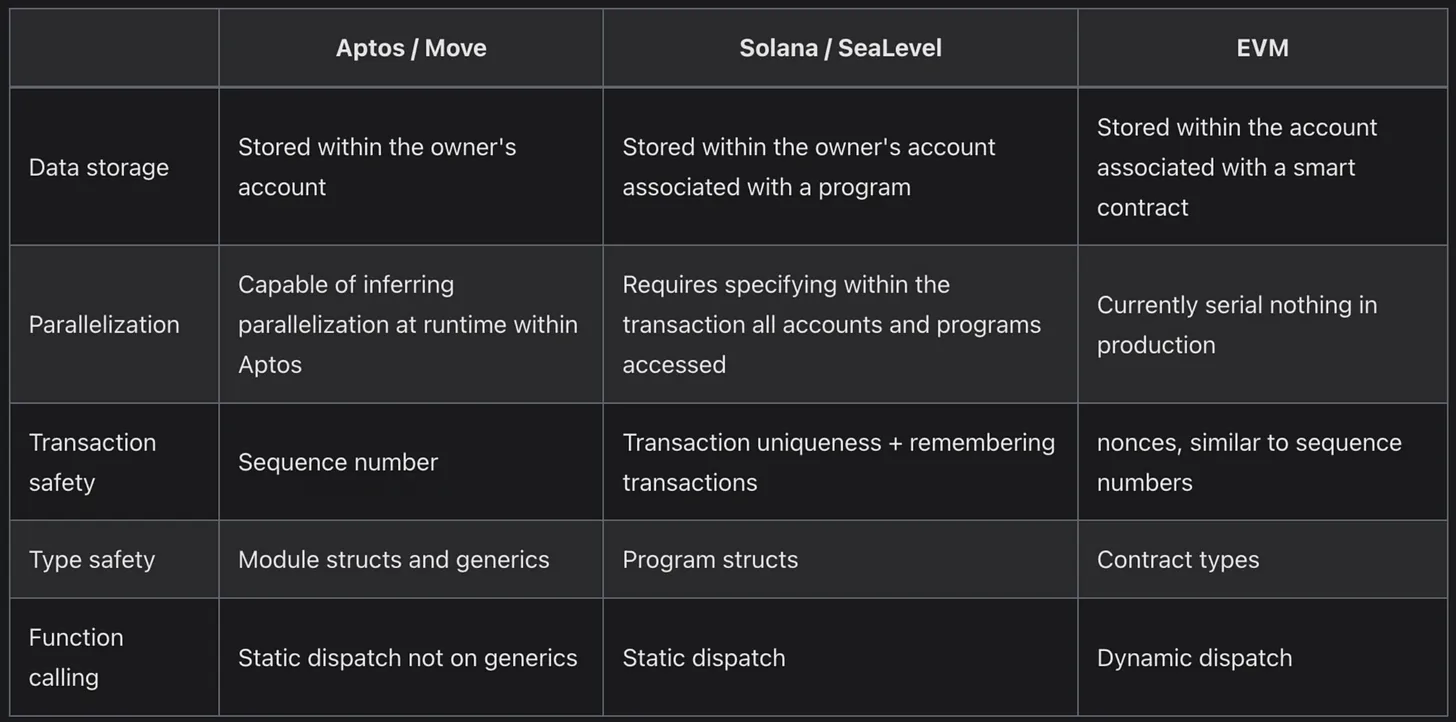
Aptos uses core Move from Libra. Sui makes lots of modification for better GameFi development experience. Sui releases Sui Move. Sui modifies the object key and storage settings as well. There are three big features of Sui Move:
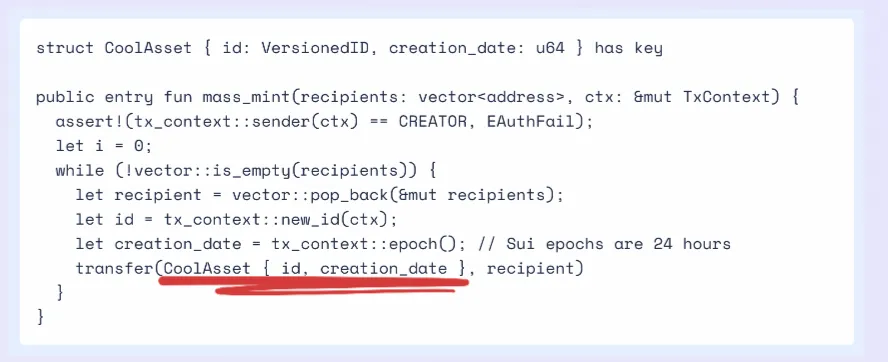
Frictionless mass asset creation allows users to create multiple assets in a while loop. This is possible because Sui improves the object keys. This implementation is not possible in Aptos Move.

Native asset ownership and transfers allow developers to take assets as input. This snippet restricts token transfer unless the holder holds assets for more than 30 days.
If we would like to implement the same thing in Aptos Move, this may cost 20-30 lines because we can only pass token ID into the function, not asset itself.
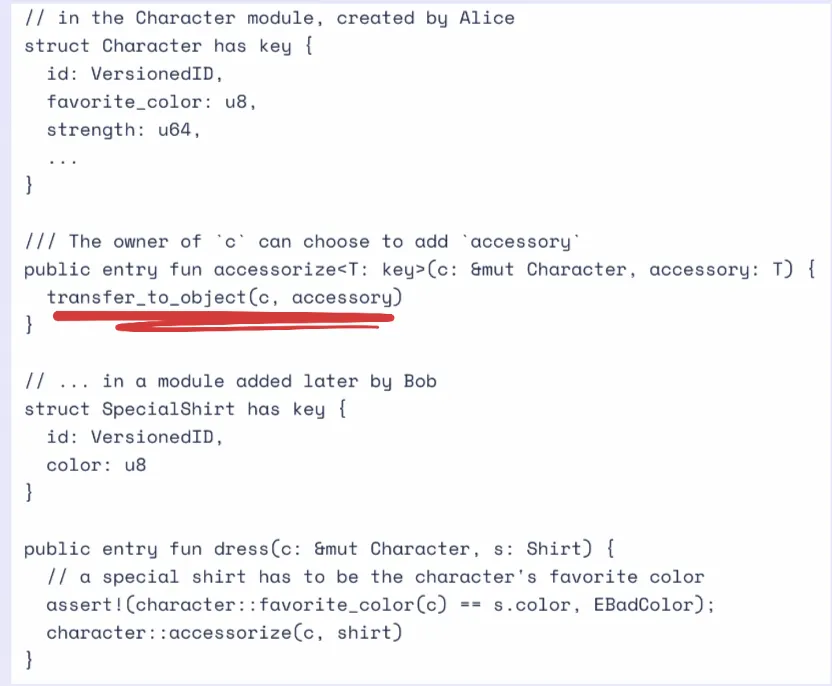
Bundling heterogenous assets allows users to bind subobjects to an object. Here we have a character and would like to equip accessories for the character. In Sui Move, the accessory directly belongs to the character. When transferring the character to the buyer, the accessories will come along with the character. This is hard to implement in Aptos Move.
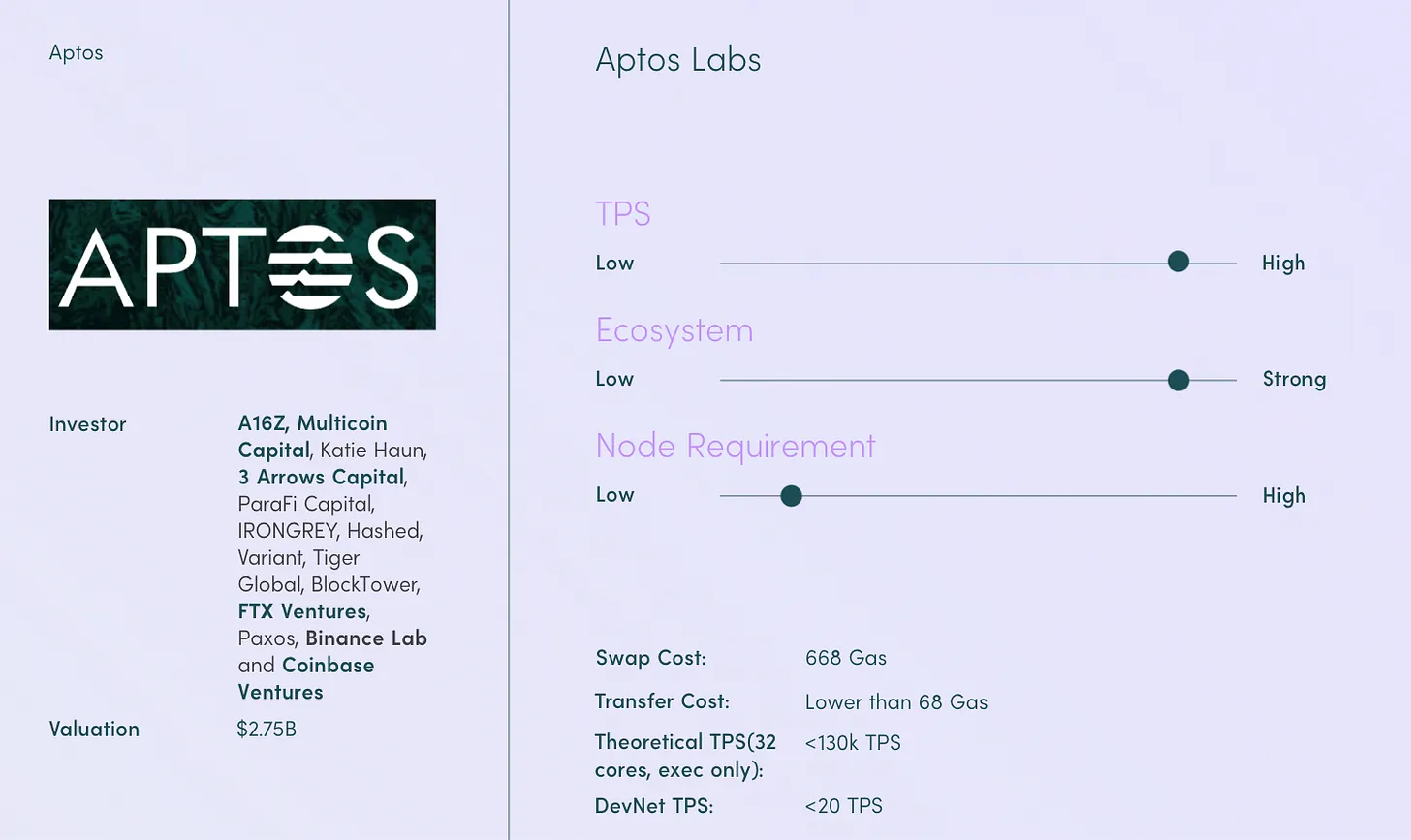
source: Aptos Labs, Fundamental Labs
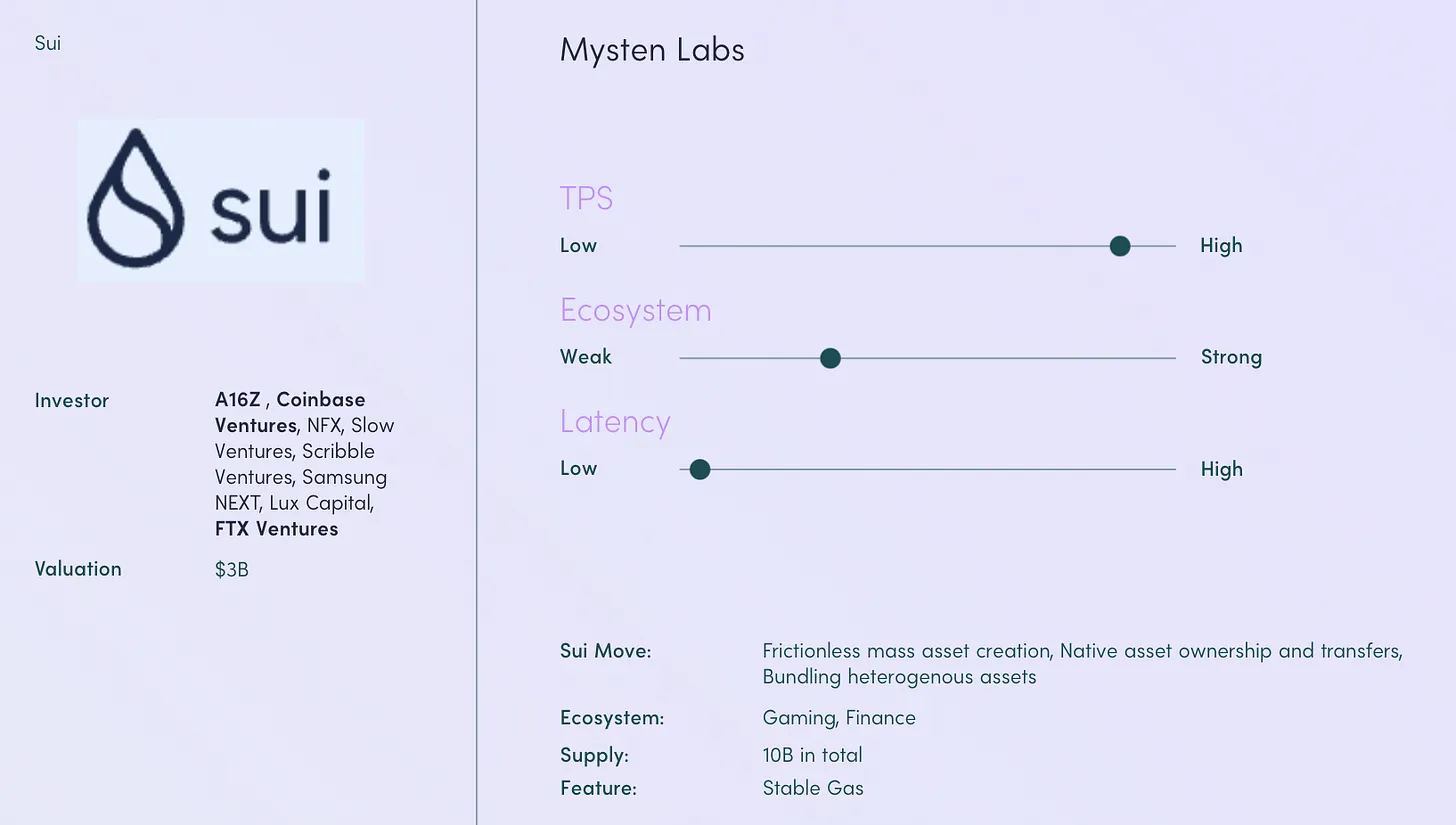
source: Mysten Labs, Fundamental Labs
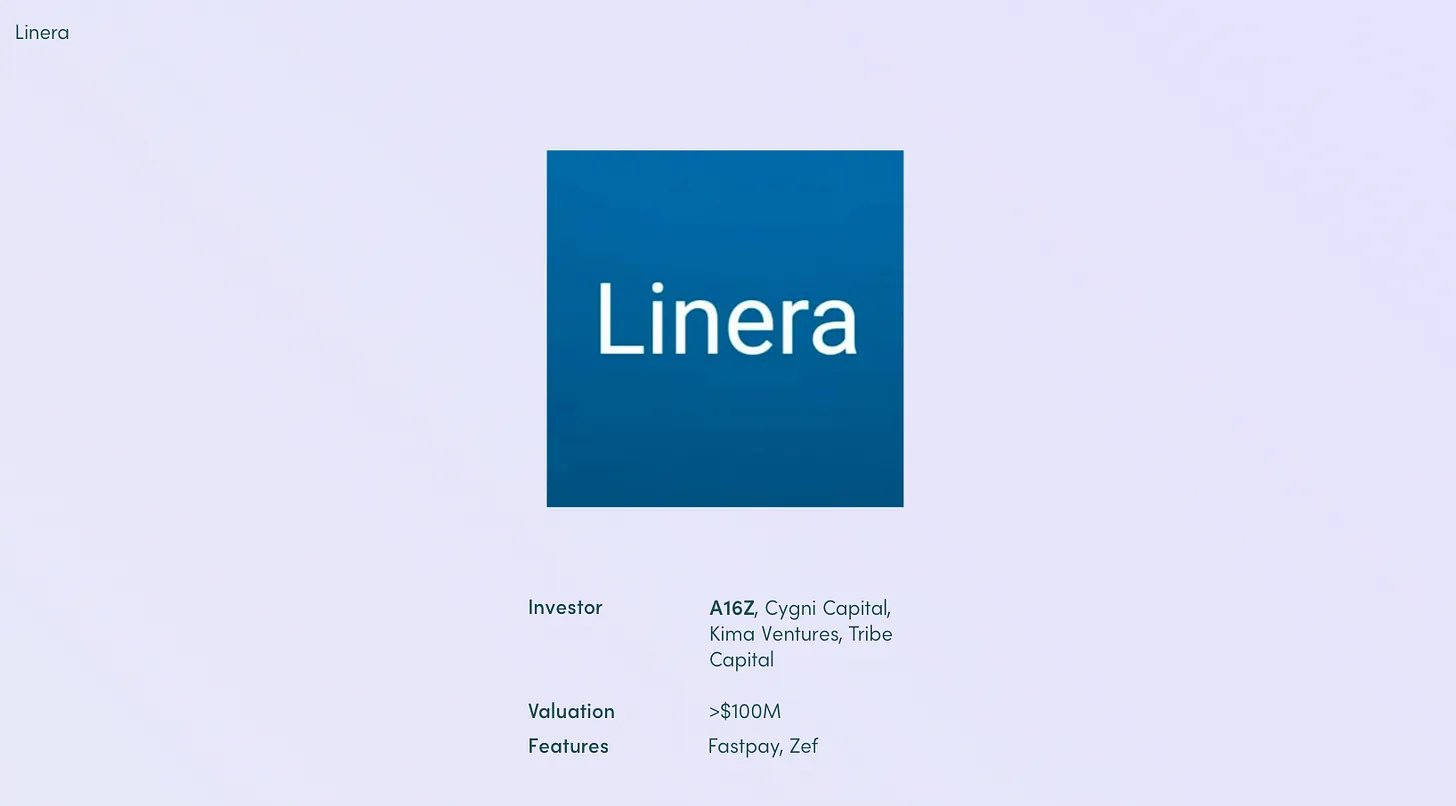
source: Linera, Fundamental Labs
#2 Smart Contract Language
The concept of smart contracts was first introduced by Nick Szabo in 1996. It wasn't until the development of the Ethereum in 2015 that developing a true smart contract became feasible. A smart contract is an automatically executed computer application that executes a contract without the need for validation from a third party. This means that both parties to a transaction do not need to trust each other in order to carry out the transaction.
EVM (Ethereum Virtual Machine) is currently the largest smart contract platform in the world, and the former challengers to Ethereum are becoming compatible with EVM. There are several smart contract languages on the market today, but the most used one is still Solidity.

Source: https://www.researchgate.net/publication/344501038_Smart_Contract_Languages_A_Thorough_Comparison
On July 28, Aztec Network announced the open source EVM programming language Huff, created by Aztec Network founder Zac Williamson in 2019, is an assembly language that allows developers to program directly into the EVM machine code, which can reduce gas fees by up to 80% compared to Solidity and Vyper. Compared to Solidity and Vyper, writing smart contracts in Huff can reduce gas fees by up to 80%.
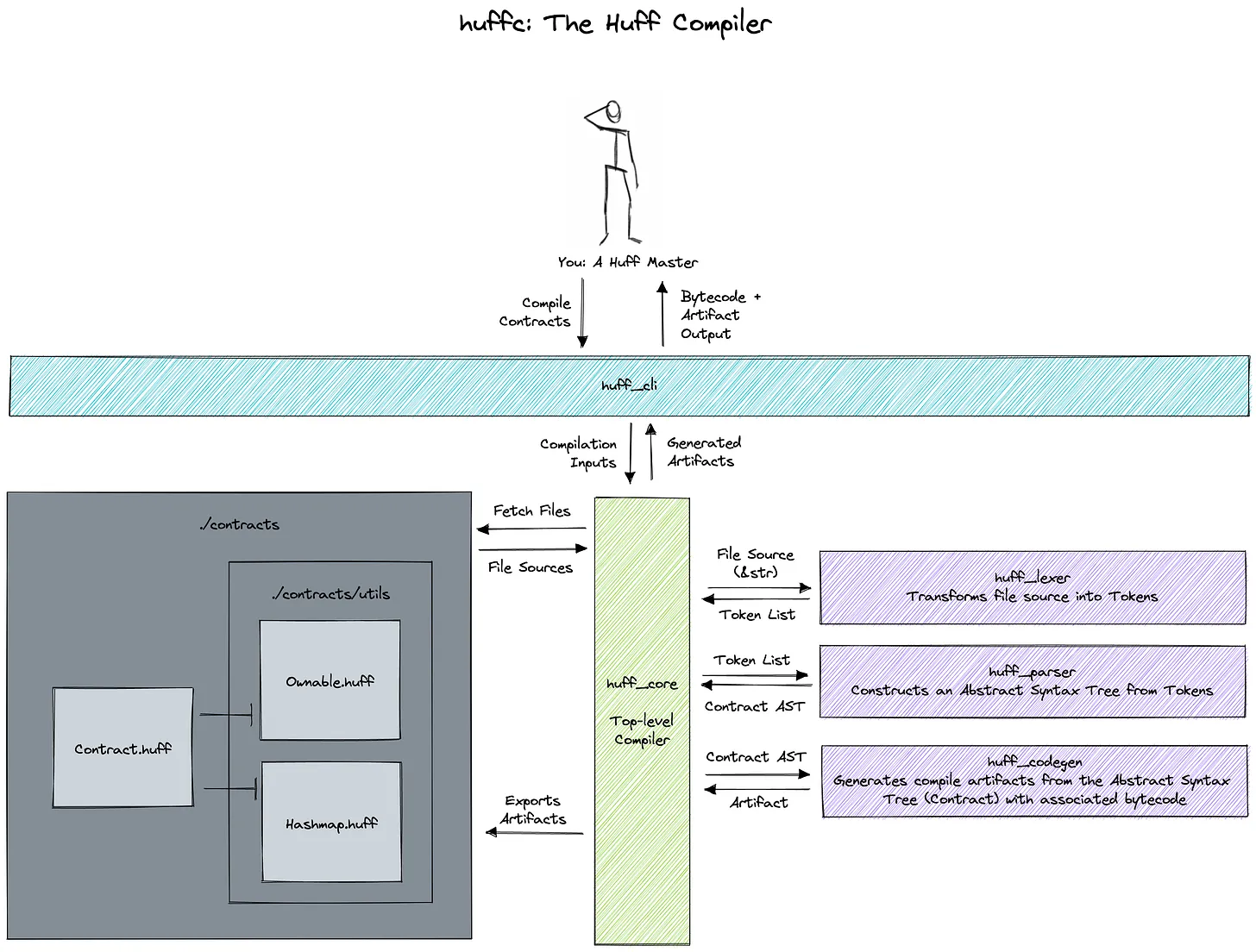
Source: Huff Github
Gas fee is crucial to the Ethereum experience, and the mainstream idea is to reduce gas by scaling, while Huff is taking a different approach by improving the smart contract language. However, it can be seen that Huff's improvement is not without cost. Huff is more underlying than Solidity, which opens up a lot of underlying stacks to contract developers, which makes contract development more difficult while reducing contract gas. So in practice, the project owner still needs to evaluate the balance between development difficulty and Gas fee.
Although EVM is currently the most mainstream smart contract platform, with the arrival of ETH2.0, Ethereum will also switch from EVM to eWASM, which theoretically supports C, C++, Go and other mainstream development languages for smart contract development. The new public chains Aptos and Sui, which have emerged recently, use Move as their smart contract language.
Weekly Recap
- Sam Bankman-Fried’s FTX is in talks to buy crypto exchange Bithumb.
- NonFungible published their Quarterly NFT Market Report.
- Aptos closed its series A funding of $150M led by FTX Ventures and Jump Crypto.
- Web3 digital identity startup Unstoppable Domains raises funds at $1B valuation.
Indicator Tracking
MVRV
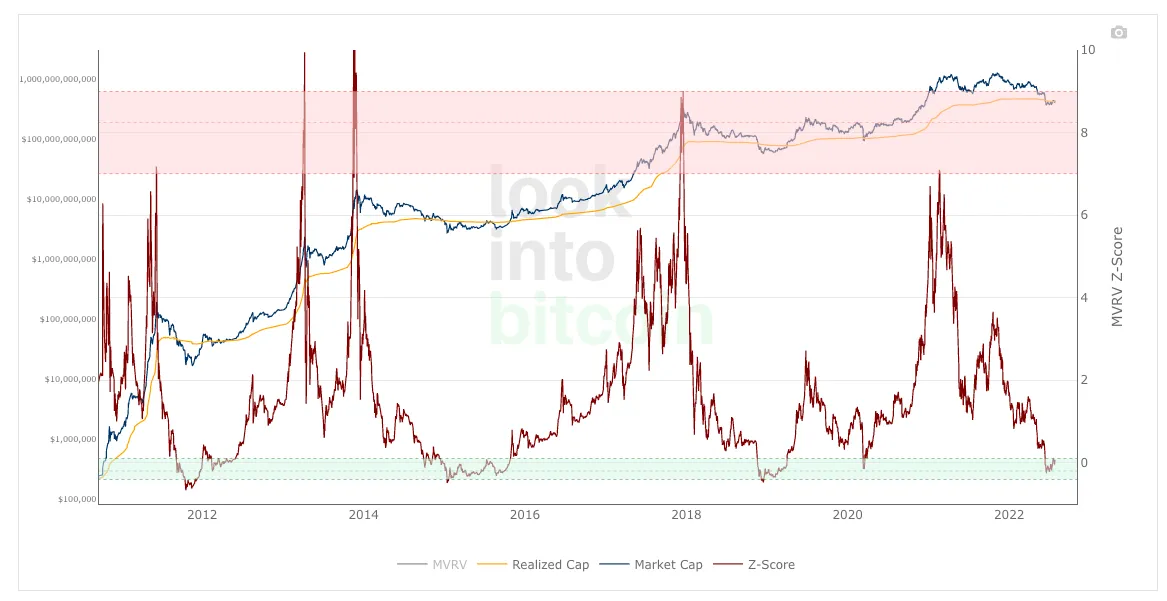
source: lookintobitcoin
Crypto Fear & Greed Index
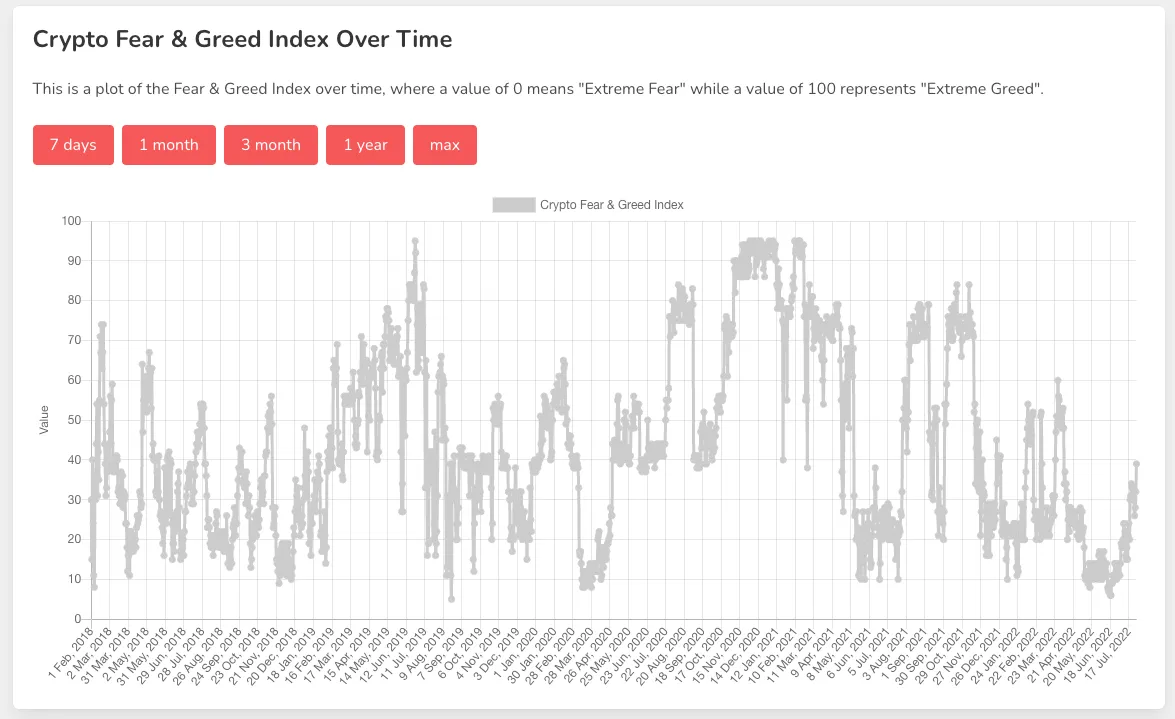
source: alternative.me
Data of NFT Market

source: NFTGo
Total Value Locked of DeFi

source: DeFiLlama
Total Value Locked All Chains

source: DeFiLlama
Protocol Total Revenue
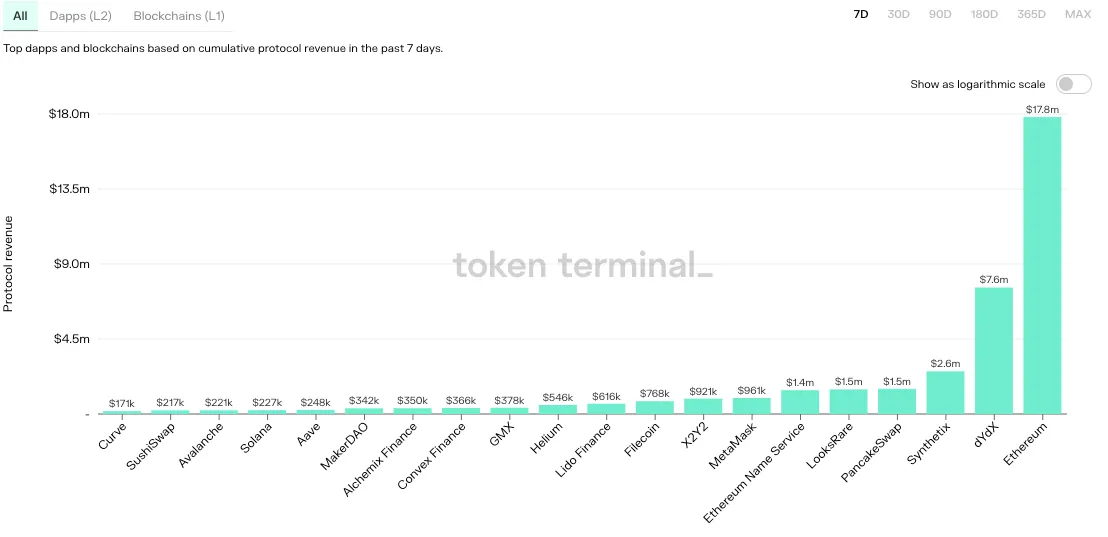
source: Token Terminal